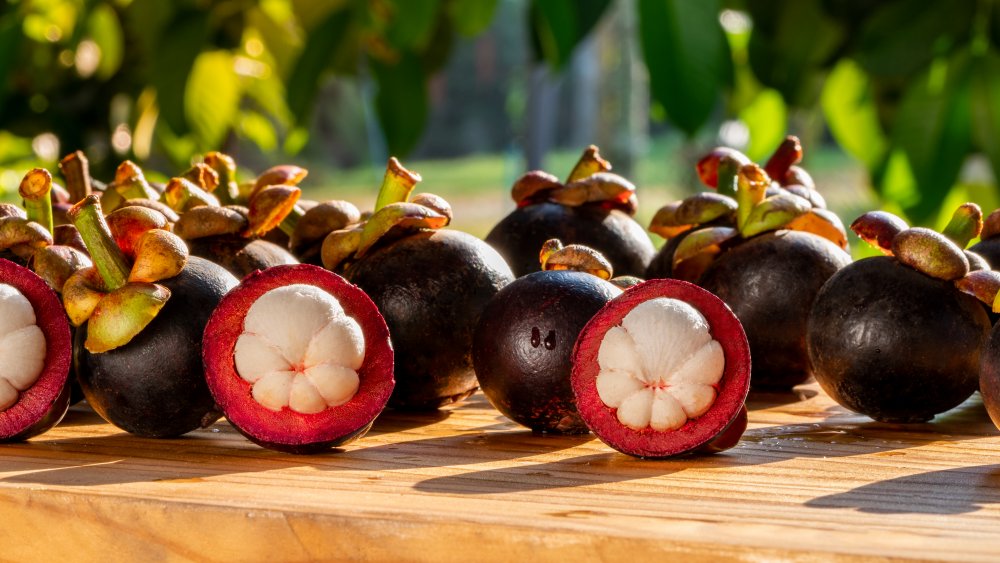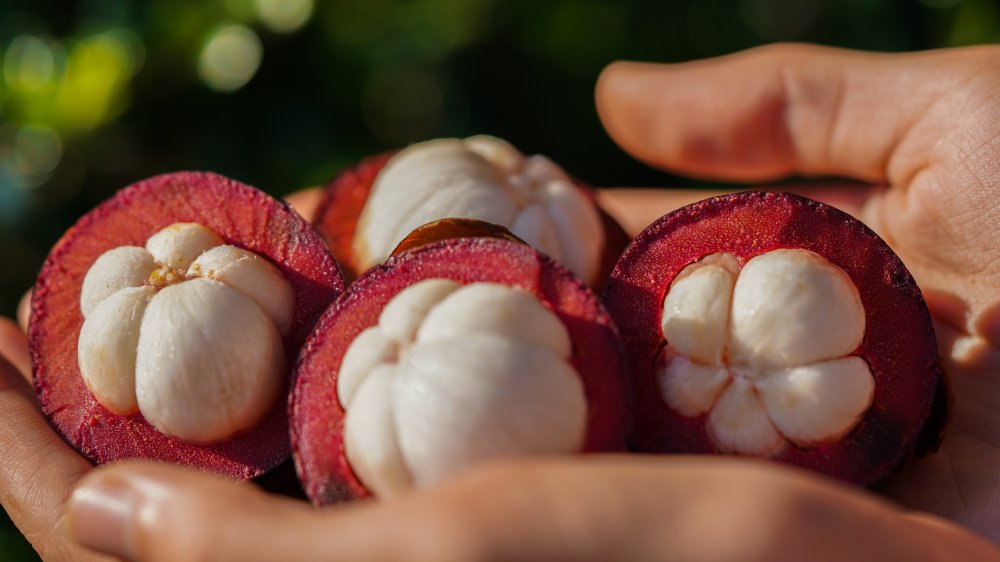The Real Reason Mangosteen Was Banned In The U.S. For So Long
Fruit lovers may flinch a bit when they hear that the smelly durian is the king of tropical fruit, but they may be relieved to know that the mangosteen is the queen. The mangosteen, or Garcinia mangostana, is the size of a tangerine, and its thick purple exterior hides creamy, sweet-sour flesh that in 1930, plant expert David Fairchild said (via The New York Times), "It is so delicate that it melts in the mouth like ice cream. The flavor is quite indescribably delicious. There is nothing to mar the perfection of this fruit, unless it be that the juice from the rind forms an indelible stain on a white napkin. Even the seeds are partly or wholly lacking and when present are very thin and small."
Healthline says a cup of mangosteen (canned and drained) contains 143 calories, 35 grams of carbs, 3.5 grams of fiber, and is rich in vitamins C, B1, B2, B9 as well as minerals like manganese and magnesium, which our body needs to produce DNA, to promote wound healing, and immunity. The fruit also contains antioxidants like vitamin C, folate, and xanthones, which have been shown to be anti-inflammatory, anti-cancer, anti-aging, and anti-diabetic.
Mangosteens sometimes have a fruit fly problem
But the mangosteen is notoriously difficult to cultivate. The fruit is believed to have come from Malaysia or Indonesia, and outside of its home region of Southeast Asia, the fruit struggles to survive. Its tree needs plenty of humidity, and cannot grow if temperatures dip below 40F, which means the mangosteen needs to be imported in order to be enjoyed fresh.
During the time of Britain's Queen Victoria, the fruit could not be imported because it spoiled rather quickly. But the mangosteen can also be infested with the Mediterranean fruit fly, which made its entry into the United States completely out of the question up until 2007 (via Delish). Only after the fruits were irradiated to assure disinfestation were mangosteens allowed into the U.S. so they might be enjoyed fresh.
To select perfect mangosteens, The Spruce Eats suggests you find fruits that have robust-looking green caps and a glossy sheen on their purple skins, and make sure the fruit doesn't have resin on the outer rinds.

